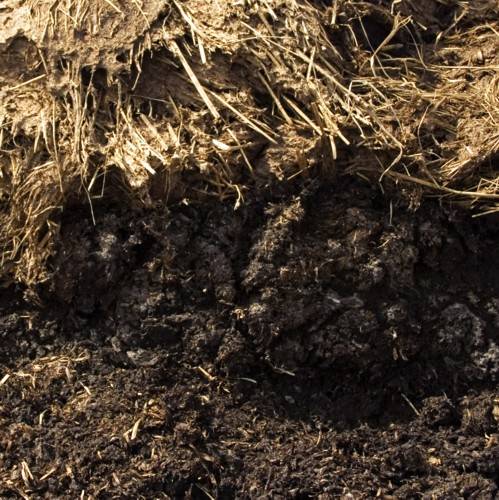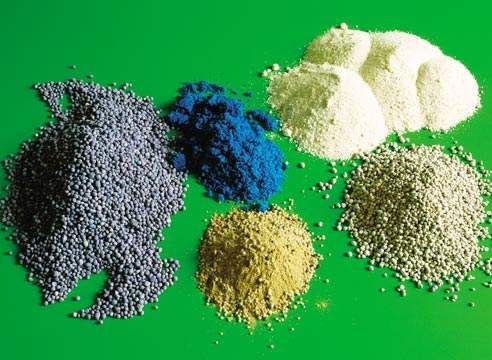The fertilizer of the soil is one of the most responsible gloom care stages. Spring works are especially important in this regard. Very carefully take care of the choice of compositions and their combination. Otherwise, with incorrectly performed work, the result will not increase the nutrition of the soil, but the harmful effects and decrease in the fertility of the Earth. Before you begin spring care, carefully read the recommendations and accurately follow them to ensure high yield of planted crops.
Content
What are the types of fertilizers?
All substances suitable for increasing the nutrition of the soil are determined in three categories:
What are the features of the use of mineral fertilizers?
This group is represented by ready-made mixtures of certain chemical elements.
Important! Take into account that the use of artificial fertilizers most often has a beneficial effect on the development of plants, but at the same time contributes to the depletion of the soil itself.
Before buying fertilizers in the form of a finished mixture of minerals, carefully read the composition. Such an approach will help to choose a suitable set of components, given the needs of the estimated landing on the culture plot. 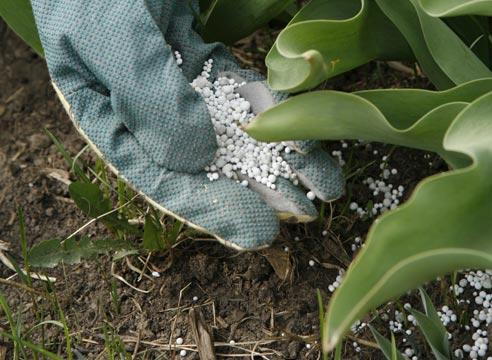
Important! Most often on sale presented mineral powder fertilizers of large and fine grain. Therefore, it is very easy to perform the calculation of the dosage when used.
Browse the following examples of conformity to the effect of a particular element and the task:
- Nitrogen (N) affects the growth of cultures and the formation of greenery. It is ideal for feeding plants in vegetation.
- Copper (CU) takes part in photosynthesis. Also contributes to increasing resistance to low temperatures and diseases.
- Potassium (K) affects the perception of water and is necessary for a full photosynthesis. Potash mixtures perfectly stimulate the rapid growth of shoots and increase the stability of plants to pest attacks.

- Calcium (CA) has a positive impact on all biological processes in the development of planted crops, and also contributes to the improvement of the structure of the Earth.
- Iron (FE) is a mandatory element for full bloom of plants.
- Phosphorus (P) contributes to the growing and strengthening of shoots and flower strings. The presence of this element is important in sufficient quantities in the ripening of fruits.
- Magnesium (MG) - indispensable for full photosynthesis. In addition, it affects the pigmentation of cultures and activates breathing enzymes.
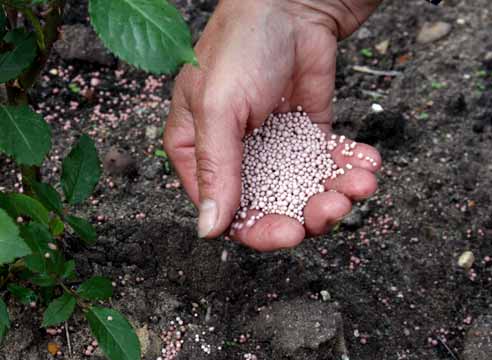
Important! All ready-made mixes are used in a clear compliance with the dose manufacturer. Exceeding it will not increase yield, but will lead to the death of all seedlings.
Advantages and disadvantages of mineral fertilizers
To understand whether the mineral organic fertilizers should be preferred, familiarize yourself with the list of advantages and disadvantages below.
Advantages:
- high, but at the same time balanced, the concentration of nutrients in the mixture
- a small amount is required
- ability to adjust the size of the crop, as well as the quality of the fruit
- the use of fertilizers of this group is acceptable for any soil.

Disadvantages:
- the cost of mixtures is sometimes high enough
- the need for regular application
- with overdose - the death of all planted crops.

How to choose high-quality mineral fertilizer?
When buying a mixture, in addition to the composition, pay attention to the following parameters:
- Manufacturer. In this respect, be sure to note how popular one or another brand is preferred to give preference to the quality of the products of which there is no doubt.
- Type of soil. Be sure to take into account not only the level of soil fertility on your site, but also its composition. For clay soils, there will be more suitable types of compositions that will be unacceptable for sandy.

- Shelf life and type of packing. Despite the fact that the period of preserving the nutrients of many mixtures is quite long, pay attention to how fresh fertilizer you are offered to purchase. Select the package option, the amount of fertilizer in which you will meet your needs.
- Recommendations for use. Each particular composition, manufacturers necessarily attach their recommendations for use. Carefully read them to purchase a suitable look of the mixture.

What are the types of organic fake plants?
All substances of this group are vegetable or animal origin.
The first category includes:
Among the options of the second group most often use:
- horse or cow manure

- bird litter.

Important! Before deciding than to focus the garden in the spring, carefully read all the important characteristics of each type, as well as advantages and disadvantages. With this approach, the risk of choice of inappropriate fertilizer will significantly decrease.

Advantages and disadvantages of organic fertilizers
Pros:
- Increasing the number of humus in the composition of the soil
- Balance of soil
- High saturation macroelements of natural origin
- Possibility of workpiece without financial costs
- After reaching the desired soil fertility, it becomes less likely to regularly feed garden crops.

Minuses:
- Danger combustion plants
- The need for large massyFizicheskie costs in the preparation and introduction of the mass on the ground
- The possibility of contamination by flies or other pests of some plants
- Pungent odor.
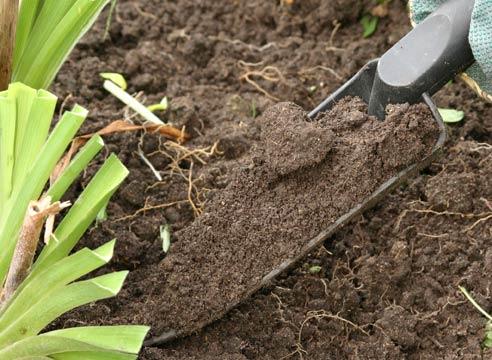
What is the use of manure?
this kind of fertilizer was the most popular until recently. When correctly performed the preparation can not be overstated its beneficial effects on soil fertility, which is expressed as follows:
- enrichment of soil beneficial microorganisms
- improved land cover structure portion
- adjust acidity, preventing the spread of harmful chemicals
- it gives the necessary looseness of the ground
- soil warming.

Important! If you prefer this method, it is pay heed to the solution preparation procedure. An excessively high concentration may produce the opposite effect.
As manure to fertilize the garden?
Bear in mind that it is unacceptable to use fresh manure - in the process of decay, he can "burn" the plants planted. Recommended pre withstand at least one year, for which the manure peregniet and dries. In this form, it is ideal for fertilizer in the spring. 
Methods for applying manure:
- formation of a dense mass of
- preparing a solution by adding water.
Recommendations for the use of manure:
- previously adding straw to improve the consistency of the manure.

- Perform all work on garden fertilizer 1-1.5 prior to planting crops selected.
- When the fertilizer evenly throughout the territory of the whole mass, putting the individual pieces in the shallow ground.
- The calculation of the required number of follow on the basis of the following recommendations:
bird droppings
This fertilizer are always in demand due to the high efficiency and the rate of appearance of the result. Its advantage lies in the fact that the poultry manure decomposes quickly, and the amount of nutrients is not less than the horse's or cow manure. 
Important! In order to prevent the immersion of bird litter, after which it is impractical to use it due to a significant reduction in the concentration of nutrients, to storage, interfere with peat in proportion 1: 1.
Video
Browse the video in which the process of preparing a solution based on bird litter is clearly shown.
Features of the use of peat
Peat is obtained in the process of rotting plants. Most often for its formation, it is used by the foliage, tops, rice weeds. The use of peat in the process of spring preparation of the soil to landing and during the care of the garden certainly affects the structure of the soil. Under the influence of this organic fertilizer, it acquires greater loin. 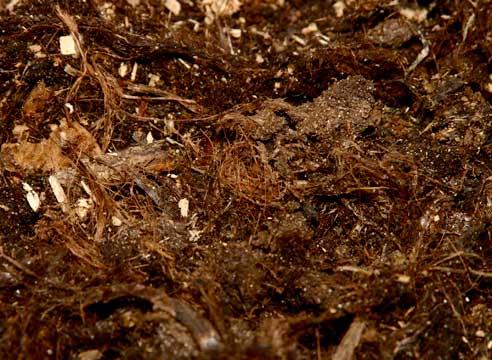
Important! Billet peat make autumn. With properly created conditions for decreasing plants, the fertilizer will be ready for the spring.
What is compost and how to use it?
Compost is a combined organic fertilizer, for the preparation of which various materials are used. For its formation, use any handy and affordable substances from each group to make this process as low as possible.
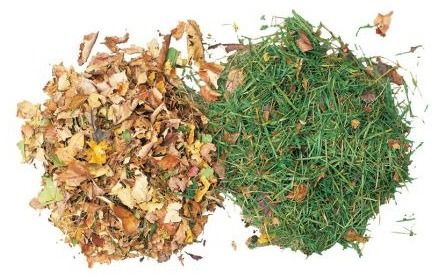
The first group includes the so-called green waste:
- manure
- stem legumes
- fekalya cattle
- squeezing and trimming fruits and other fruits
- bird litter
- green leaves

- waste after cooking
- beveled grass
- top.

Important! Such components of future fertilizer will provide the necessary warmth and become a source of nitrogen.
Please note that the materials of this group in the process of rotting exude a sharp unpleasant smell, but the duration of it is short. 
The second group make up "brown" materials:
Important! Such substances contribute to the deduction of moisture and air due to the porosity formed all the masses. They give the necessary turbidity to the soil.
Competitions for the preparation and use of compost
There are several specific rules, subject to which the fertilizer compost will allow you to quickly increase the nutritionality of the soil in one season:
- Form a bunch, sequentially adding the layers from the materials of both groups.

- An example of a compost composition according to the layers:
- Straw - 15 cm
- Manure - 20 cm
- Peat - 15-20 cm
- 50g lime in half with phosphoritic flour on 1m2 compost
- Manure - 15 cm
- Soil - 5 cm.
Important! The duration of the period to complete compost readiness is 7-8 months.
- Make such a fertilizer to the top layer of the soil, the depth of which does not exceed 10 cm.
- Do not leave a mass on the surface of the Earth - this will lead to a quick drying of the mixture and will not have an intended result.
- Make a prepared mixture over a month before the planting of cultures, especially when the rotation process has occurred not to the end.

- When using the necessary mass consistency, make it directly when landing into prepared pits or furrows.
- When calculating the required quantity, focus on the average in 2 buckets per 1m2.
- Perform fertilizer using such a mixture of organic composition 1 or 2 times a year.
Important! Do not use the compost of the well - stagnation of water not only slow down the process of proper rotting, but will lead to a lower quality of fertilizer.

Features of the use of combined fertilizers
Each mixture of this group is used strictly according to an individual scheme. The main criterion is the combination of mineral and organic components. But there are general rules:
Standard proportions to use this type of fertilizer:
- 0.3-0.7l / 1t grains during preparatory seed processing
- 10 ml of concentrate on 10 liters of water for spraying
- 0.2-0.4l / 1g when feeding leaves
- 30 ml of a solution of 1000l fluid at drip watering.

Conclusion
Regardless of how exactly the type of fertilizer you prefer, certainly adhere to the recommended proportions in the fertilizer process. Only with this approach the quality of the crop will correspond to expectations.



